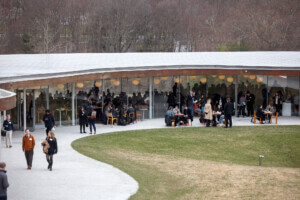After peaking at the all-time historic high of $1,711 per thousand board feet in early May, the cost of wood is now experiencing a rapid descent. As reported by the Wall Street Journal last week, lumber futures for July ended at $1,009.90, a figure that represents a dizzying downwards shift of 41 percent.
As noted by Fortune, the record-setting run experienced during the pandemic was fueled in large part by housebound DIYers embarking on home improvement projects both minor and major during the coronavirus pandemic. But, with restrictions easing across the country, this has come to an end as those same lumber-hoarding DIYers resume activities—and spending—on travel and entertainment. Many of these projects were financed in part by stimulus checks dispersed by the federal government during the course of the pandemic. The astronomical, unsustainable prices for lumber are also playing a formative role in the downturn as DIYers and builders alike are now delaying and shying away from embarking on projects. Meanwhile, the roughly 3,000 mills across the country aggressively ramped up production to meet demand. Per Fortune, new home construction and home improvement sales both took dives of 8.8 and 8.1 percent, respectively, in May after reaching record-setting highs in March.
“The do-it-yourself sector, it’s not as robust as it was a year ago when homeowners were locked down and using stimulus and travel money to do a lot of home improvement,” said Shawn Church, editor of trade publication Fastmarkets Random Lengths, told the New York Times.
Yet as noted by the New York Times, while the nosediving cost of softwood lumber is unprecedented, the price, for now, remains significantly higher than average. Between 2009 and 2019, a thousand board feet averaged less than $400.
With a bubble now effectively burst and the threat of inflation enters the rearview, it’s unclear how much further lumber costs will fall. As noted by the WSJ, industry producers and traders don’t expect a sustained plunge and anticipate prices will likely stabilize above average due in part to the strong housing market. “… the supply bottlenecks and frenzied buying that characterized the economy’s reopening and sent prices to multiples of the old all-time highs are winding down,” elaborated the WSJ.
“I don’t think $1,000 lumber prices are the new normal,” the WSJ reported Devin Stockfish, chief executive of Seattle-headquartered lumber producer Weyerhaeuser, as telling investors at a conference held last week. “But that being said, when you think about the amount of housing that we’re going to have to build in the U.S. over the next three, five, 10 years, that’s just a significant amount of demand for wood products.”
With the price of lumber simply out of reach in recent months, new construction technologies, namely 3D-printed concrete homes, have emerged as an increasingly attractive alternative to stick-built construction, particularly in the realm of much-needed affordable housing in which time and, of course, cost, are of the essence.











